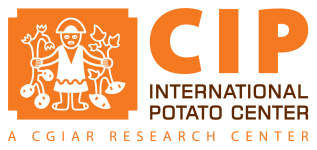Potato Value Chain improves productivity of potato farming system by 49% for 20,500 farmers in Kenya
Published on: March 28, 2021, Submitted by Monica Parker on: March 25, 2021, Reporting year: 2020
Farmers increased potato yields by 49% from 7.7 to 11.5 tons/ha by applying International Potato Center (CIP) technologies after receiving training on learning farms. During the baseline, men applied new technologies over much larger areas than women, but this difference vanished by the time of the follow-up survey. Potato sales contributed USD 4.9 million to the economies of the two intervention counties.
Project beneficiaries
At the end of its second phase, the Accelerated Value Chain Development (AVCD) project conducted an annual survey to see how well it was reaching its 20,500 beneficiaries with new technologies (such as improved seed, irrigation, and pest management techniques) and by developing farmer organizations. The survey asked about production, sales, and use of technologies by Kenyan farmers in two project counties (Bungoma and Taita Taveta). The project surveyed 257 beneficiaries in 10 wards and found major changes since the project started. Since the baseline in 2018, many more farmers were using quality seed, and improved technologies on more land, which led to higher sales values. By the time of the survey in August 2020, 46% of the respondents used quality seed, more than twice as many as during the baseline (then only 15%). Almost all farmers (98.7%) were using at least one project technology. By developing a localized seed system, farmers could acquire quality seed close to home (on average just 3 km away), while at the time of the baseline farmers had to travel 110 km to buy certified seed. Long travel distances are a hardship, especially for female farmers, so having excellent seed close to home was a major benefit for women. Sale values jumped on average 133% to USD 1,680 from the baseline value of USD 721. The average area under potato more than doubled from 0.12 ha to 0.35 ha, and yields increased by 49%, from 7.7 to 11.5 tons per hectare. Women farmers increased their earnings by USD 1,040, compared to USD 918 for men
An annual survey was conducted to determine the progress the project had made against the set indicator targets in reaching 20,500 beneficiaries by the end of the project (phase 2) through disseminating various technologies to improve productivity and developing farmer producer organizations. The survey was conducted in two project counties of Bungoma and Taita Taveta to access progress on production and sales including technologies practiced by farmers along the value chain. Data collected from the annual survey were analyzed and data extracted for reporting annual indicators and other project indicators as stipulated in the impact pathways. From 10 wards selected among the four counties, 257 beneficiaries were interviewed and all had their data analyzed for different responses. The interviewed households were drawn from the project beneficiaries’ database. The design of the survey followed the United States Agency for International Development (USAID) Accelerated Value Chain Development (AVCD) program: Design Protocol for Annual Monitoring Surveys. The results from the survey reveal that there have been improvements since the project started. This is confirmed by the number of farmers using quality seed compared to the baseline, increase in the value of sales, increased in the number of hectares under improved technologies, an increased number of farmers applying selected technologies promoted by the project. From annual survey results, 46% of the respondents used quality seed, greater than double from the baseline where approximately 15% of respondents used quality seed. As a result of developing a localized seed system, the distance traveled to access quality seed reduced to 3 km as compared to the baseline where such quality seed sources did not exist and farmers had to travel 110 km to purchase certified seed. On average there was an increase in the mean value of sales by 133% to USD 1,680 from a baseline value of USD 721. The average area under potato increased from 0.12 ha to 0.35 ha, and yields increased by 49% from a baseline of 7.7 to 11.5 t/ha. In terms of gender, female beneficiaries recorded an increase in gross margin of USD 1,040 from the baseline compared to male beneficiaries who recorded an increase of USD 918 from the baseline values. In terms of technologies, 98.7% of the respondents applied at least one technology promoted by the project.
Stage of Maturity and Sphere of influence
-
Stage of Maturity: Stage 2
-
Contributions in sphere of influence:
1.2.2 - Reduce Market Barriers
1.4.1 - Reduced pre- and -post production losses, including those caused by climate change
Acknowledgement
Projects
-
The Feed the Future- Kenya Accelerated Value Chain Development (FtF AVCD program)








